What to Wear??
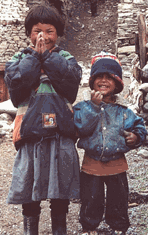 Namaste !!
Namaste !!
Unless you are planning to do more
high-altitude trekking you probably don’t want to buy lots
of fancy clothing and equipment. When packing, don’t worry
about the weight. You shouldn’t need to do much more than
man-handle your pack around. The porters are used to
carrying much more weight than this. As a guide, 20 kg is
about the maximum for trekking (15 is ideal) and a few kilos
more is fine with the airlines. Remember, you don’t have to
take all your belongings with you on trek.
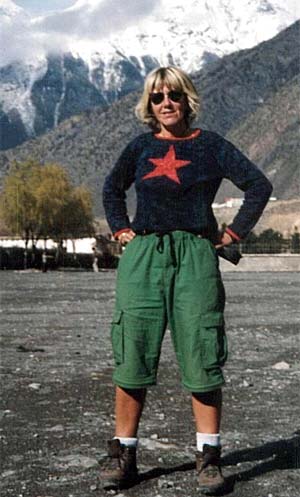 You will need a good wind-proof, water-proof jacket. It
doesn’t have to be warm; you can layer-up underneath it. I
like to carry a pair of water-proof over- pants but I hardly
ever use them. Both these items are available in Kathmandu
(that’s the city not the shop) at a very reasonable price
(around $40 for a jacket). The quality is ‘reasonable’. You
may not need to use it but if you do it may save you.
You will need a good wind-proof, water-proof jacket. It
doesn’t have to be warm; you can layer-up underneath it. I
like to carry a pair of water-proof over- pants but I hardly
ever use them. Both these items are available in Kathmandu
(that’s the city not the shop) at a very reasonable price
(around $40 for a jacket). The quality is ‘reasonable’. You
may not need to use it but if you do it may save you.
I've found CROCS fantastic lately. With socks when cold, otherwise without and also good for the shower. Very light in your pack. Cheap copies are available in Kathmandu and Pokhara ($5).
Long bottoms and long sleeved tops - Nice warm undies are next in order of importance 2 pairs (they can double as pyjamas). You will mainly wear them for ‘apre-trekking’
such as sightseeing in the village or sitting outside on a
terrace reading which can get chilly as the sun disappears
very early in such steep-sided valleys. Plenty of normal
undies too of course, a pair of ultra lightweights that will
dry by the fire are handy. On average we can do a little
washing every four days.
The rest is up to you. Some women like to trek in skirts.
I am frequently asked at checkpoints ‘Sir are you male or
female?". If you wear a skirts you need leggings or trousers
underneath in the countryside as bare legs are considered a
bit ‘flashy’. If you wear shorts (men or women) keep them
baggy and long for a more decorous look. I have a pair of
pants with legs that zip off later in the day when it warms
up. They are great. You can buy them in Kathmandu. Loose
trousers are easier to walk in if you are taking large steps
uphill. Track pants are easy to wear after trekking and will
still fit you when you loose 5 kilos – fleecy ones are a bit
warm lower down but normal ones are a bit cool higher up.
Two pairs are ok.
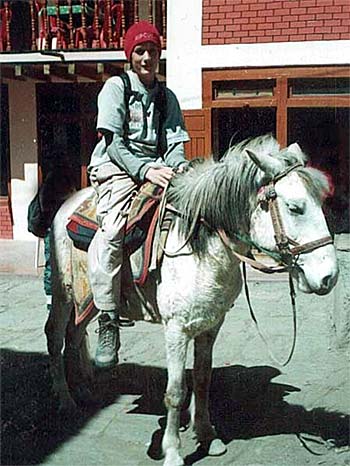 Trekking t-shirts are marvelous. Unlike cotton these hi-tech tops let the sweat evaporate quickly so you wont get chilled when you stop for a cup of tea in the shade. Long and short-sleeved 'fakes' are available in Kathmandu and Pokhara for about $6. However, no XL sizes are available.
Trekking t-shirts are marvelous. Unlike cotton these hi-tech tops let the sweat evaporate quickly so you wont get chilled when you stop for a cup of tea in the shade. Long and short-sleeved 'fakes' are available in Kathmandu and Pokhara for about $6. However, no XL sizes are available.
A thick, snug fleece is the most useful thing to bring or buy in Nepal. I prefer a front zip, rather than a pull-on as its easier to get on and off and on and off. Some jackets have a zip-out fleece built in.
I have a super-down jacket. It cost $50 in Nepal. It weighs almost nothing and compresses into a tiny bag. It is very warm yet not bulky.
Buffs have become very popular. A circle of cotton jersey which you can wear round your neck, around your wrist, over your hair when it gets disgusting (and it will get disgusting), as a scrunchie, or over your nose and mouth when the gritty wind is blowing in your face. Just a few dollars in Kathmandu..
Ladies, a sports-bra or those elasticated crop-tops can keep
you comfortable. A long day of down-hilling can have you
jiggling way too much for comfort.
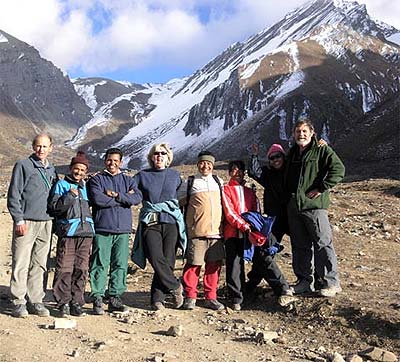 A good sleeping bag will reward you with a good night’s
sleep. If you don’t want to shell out a fortune in Australia
you can get one quite cheaply in KTM. If yours is not quite
warm enough you can buy a fleecy liner there as well. On
trek we will be given quilts at night if it is cold – very
cosy although not always the cleanest.
A good sleeping bag will reward you with a good night’s
sleep. If you don’t want to shell out a fortune in Australia
you can get one quite cheaply in KTM. If yours is not quite
warm enough you can buy a fleecy liner there as well. On
trek we will be given quilts at night if it is cold – very
cosy although not always the cleanest.
You will need your own toiletries and
towels. Trekking towels dry quickly and are light enough to
keep one in your day pack. You will need to have your own
little medical kit, sewing repair bits and bobs and a good
torch (I love my new head-torch with LED lights so the
batteries last for ever).
Your pack can be large if you like. You may take home a lot
more than you came with. Even if you bring better clothes
for looking good around town you don’t have to take them
trekking with you. We can leave things in Kathmandu and
Pokhara quite safely.
A well-fitting daypack is really useful. It should have
pockets on the sides for access to your drink bottle (I like
the aluminium ones) and sunscreen (which you will want to
reapply hourly if the sun is shining on the snow). In this
pack you’ll keep a spare fleece or jumper (fleece is
lighter), maybe a plastic rain poncho and your camera and
film.
Bring a couple of good books you’ve been meaning to read.
There is a fair bit of sitting around time and you won’t be
carrying them.
Around town I like to wear ‘salwar kamiz’. It’s a longish
A-line fitted dress over baggy trousers. Have one made in
Pokhara!
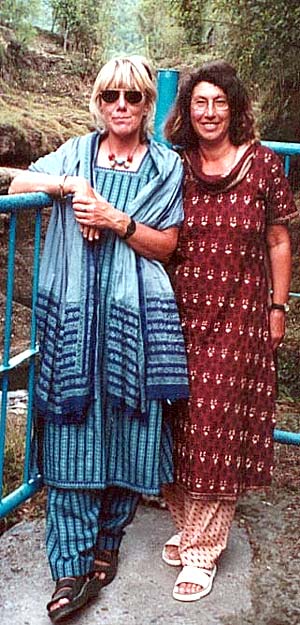 Accessories are up to you. Definitely good sunglasses.
(If you wear prescription glasses best to bring a copy of
the script in case you lose them). Or perhaps an old pair as
a ‘spare’. Light coloured sunglasses will be inadequate.
Wrap-around sunglasses will keep the glare out of the sides
and the gritty wind. A warm hat is a must (you can buy cute
ones there). Also a sun-hat is very useful. Early on the
trek it will be sunny and hot and it is also useful for warm
sight-seeing days in town. Good ski gloves could get
forgotten or pinched. There are cheap gloves along the way
if we decide we need them (homespun wool or fleece).
Accessories are up to you. Definitely good sunglasses.
(If you wear prescription glasses best to bring a copy of
the script in case you lose them). Or perhaps an old pair as
a ‘spare’. Light coloured sunglasses will be inadequate.
Wrap-around sunglasses will keep the glare out of the sides
and the gritty wind. A warm hat is a must (you can buy cute
ones there). Also a sun-hat is very useful. Early on the
trek it will be sunny and hot and it is also useful for warm
sight-seeing days in town. Good ski gloves could get
forgotten or pinched. There are cheap gloves along the way
if we decide we need them (homespun wool or fleece).
I like a big scarf to use around my throat when cold or
around my face for a gritty wind. I also take a huge
scarf/sarong (bought up there) which I use to walk back from
the shower to my room or to lay over the pillows if they
don’t look too clean. (remember, this is trekking and a
couple of the lodges are fairly basic).
Last but definitely not least do take decent socks. The
socks in Nepal have been uniformly shocking but recently a
shop opened up in Thamel selling rather good socks at
reasonable prices. Good socks. Good socks. Good socks. It’s
my mantra.
So if you put this list together with the Health Issues list
you will surely be one of the best-equipped trekkers to set
foot in Nepal since Sir Edmund Hillary.
Steri- pens were trialled successfully last season. They cost from $40 - $100 depending on how fancy they are and what kind of batteries they take. Mine was about $50 and a battery lasted about five days when treating a dozen bottles every night and perhaps half that in the morning. Far cheaper than buying bottled or boiled water. You do need the wider-necked ‘Nalgene’ bottles which look like hard plastic but can take the heat. It is easier to stick the steri-pen in the neck and swirl it around for ninety seconds. Issues we found were:
You need to make sure your hands are quite clean as you will have contact with the neck of the bottle at times
You need a clean tissue to dry the pen after use
You do have to remember which bottles you’ve done – be systematic.
I liked it very much.
Trekking pillows. I take a little pillow myself but have neglected to recommend them in the past. Sorry. The pillows in the lodges are ‘variable’.
The main piece of advice here would be ‘don’t bring too much – if undecided then look to purchase in Nepal’. I am happy to help with this on your shopping day prior to trekking.
Cheers!
TERESA.